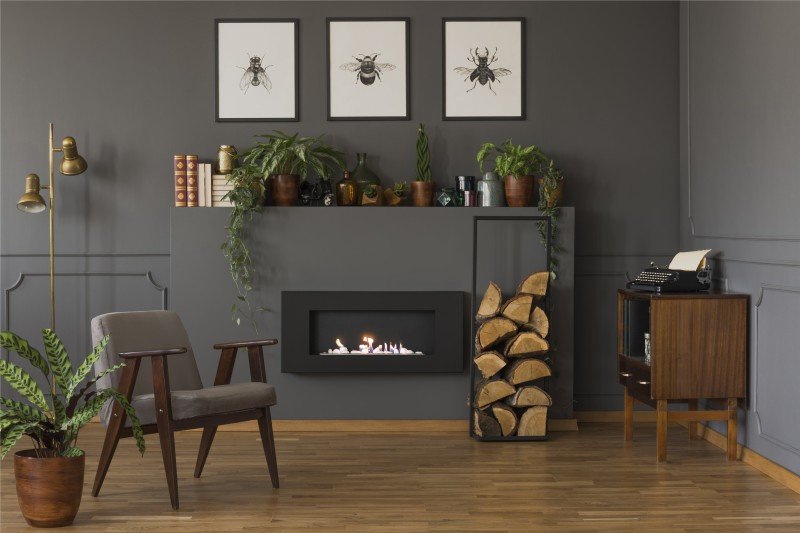The Traditional Fireplaces UK Case Study You'll Never Forget
The Timeless Appeal of Traditional Fireplaces in the UK
Traditional fireplaces have actually long been important to homes across the United Kingdom, transcending mere energy to end up being focal points of heat, comfort, and aesthetic beauty. This article looks into the long-lasting appeal of traditional fireplaces, exploring their history, design variations, setup factors to consider, and their modern-day importance.
Historic Significance of Fireplaces
The fireplace has actually played a main function in British homes because medieval times. Initially, they were essential for heating and cooking. Over the centuries, with the arrival of central heating and technological developments, fireplaces have transformed into symbols of heritage and style.
Key Historical Milestones
Date
Milestone
Description
12th Century
Introduction of Chimneys
Allowed indoor fireplaces to be common, improved ventilation.
16th Century
The Renaissance impact
Fireplaces became more ornamental, showing the age's styles.
18th Century
The Georgian Era
Developed complex mantels made from wood and stone.
19th Century
Victorian Era
Introduction of cast-iron and tiled fireplaces.
20th Century
Decrease and Modern Design
Shift towards gas and electric, with some revival of traditional styles.
Types of Traditional Fireplaces
While contemporary designs focus on minimalism, traditional fireplaces often exhibit detailed workmanship and historic significance. Here are some popular kinds of traditional fireplaces commonly discovered in the UK:
Open Hearth Fireplaces
- Defined by a large opening and generally constructed from brick or stone.
- Offers a cozy atmosphere and the noise of crackling flames.
- Requires a proper flue to redirect smoke outdoors.
Wood-Burning Stoves
- Enclosed systems that burn wood for heat, typically featuring a glass door.
- More effective than open hearths, providing better heat retention.
- Readily available in various styles, from rustic to contemporary.
Cast Iron Fireplaces
- Popular in the Victorian age, known for elaborate designs.
- Long lasting and renowned for outstanding heat conduction.
- Generally function elaborate patterns or motifs, boosting aesthetic appeal.
Tiled Fireplaces
- Frequently adorned with decorative tiles, these fireplaces display artistic flair.
- Common in the 19th century, tiles can include scenes or floral styles.
- Generally paired with wood or cast iron components.
Marble Fireplaces
- Prominent for their elegance, these fireplaces are typically custom-made.
- Marble uses a glamorous finish and complements various interior styles.
- They need careful setup due to their weight.
Table: Comparison of Traditional Fireplace Types
Fireplace Type
Heat Efficiency
Aesthetic Appeal
Maintenance Needs
Fuel Type
Open Hearth
Low
High
High (chimney cleaning)
Wood
Wood-Burning Stove
High
Moderate
Moderate (wood supply)
Wood
Cast Iron
High
High
Low
Wood/Gas
Tiled
Moderate
Extremely High
Low (if non-usable)
N/A
Marble
Moderate
Really High
Moderate
N/A
Considerations for Installing a Traditional Fireplace
Installing a traditional fireplace can boost a home's character however includes particular considerations. Here are some points house owners need to keep in mind:
Building Regulations: Always examine regional building codes and regulations. Installation might require authorization, especially if structural modifications are needed.
Product Selection: Choose materials that match the home's architecture and individual design. Consider Cheap Fireplaces Near Me with visual appeal.
Ventilation: Ensure correct ventilation through a chimney or flue to prevent smoke and gases from collecting inside.
Security Precautions: Install carbon monoxide detectors and ensure all security procedures remain in place, particularly if using wood-burning choices.
Professional Installation: Engage a qualified professional to guarantee safe and effective installation, abiding by safety requirements.
Benefits of Traditional Fireplaces
In spite of the rise of modern heating options, traditional fireplaces remain precious for numerous factors:
Aesthetic Charm
- Includes character to any room.
- Acts as a social focal point, boosting gatherings.
Psychological Comfort
- Provides warmth not just physically but mentally.
- Develops a cozy atmosphere perfect for relaxation.
Worth Addition to Property
- Boosts the appeal of a home to prospective purchasers.
- Typically increases property worth due to their desirability.
Environmental Considerations
- Wood can be a sustainable resource when sourced sustainably.
- Traditional fireplaces can contribute less to energy costs compared to electric systems.
Frequently Asked Questions (FAQs)
1. Are traditional fireplaces energy efficient?
While traditional fireplaces may not be as energy-efficient as modern heating unit, enhancements in design, such as the setup of glass doors, can boost their efficiency. Wood-burning stoves are especially understood for being more effective than open hearths.
2. How typically should traditional fireplaces be cleaned up?
Chimneys should be inspected and cleaned at least as soon as per year, especially if the fireplace is used routinely. This prevents creosote accumulation, which can lead to chimney fires.
3. Can I utilize a traditional fireplace for gas heating?
Yes, traditional fireplaces can typically be converted to use gas. This involves installing a gas line and might need a conversion package depending on the fireplace model.
4. What are the best fuels for wood-burning fireplaces?
Experienced hardwoods such as oak, hickory, or maple are recommended for wood-burning fireplaces as they burn hotter and longer than softwoods.
5. Can traditional fireplaces be utilized in modern homes?
Definitely! Many modern styles integrate traditional elements, permitting an unified mix of styles. In addition, traditional fireplaces can include a special touch to contemporary homes.
From their historical significance to their modern-day significance, traditional fireplaces stay an essential feature in lots of UK homes. Their enduring popularity is not only rooted in their functionality however also in the warmth and appeal they use. Whether one select a timeless open hearth or a perfectly tiled fireplace, the option adds to developing a welcoming environment where memories can be made. As house owners end up being more mindful of visual appeals and fond memories, traditional fireplaces are poised to maintain their allure for generations to come.
